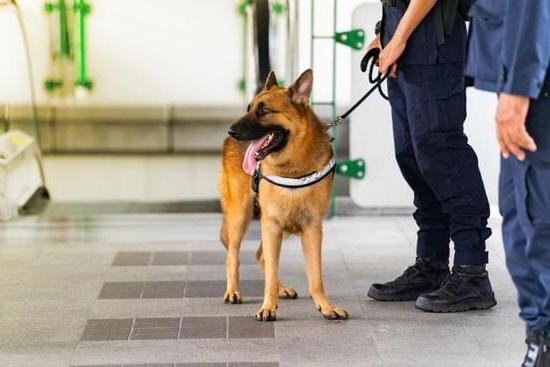How To Crate Train Dogs
There are a number of reasons why you might want to crate train your dog. Perhaps you need to housebreak them, or you need to transport them in a safe and secure way. Crate training can also be a valuable tool for obedience training.
Regardless of the reason, the process of crate training is basically the same. You will need to begin by introducing your dog to the crate and getting them comfortable with being inside. Once they are comfortable, you can begin using the crate as a training tool.
The first step is to introduce your dog to the crate. Place the crate in a quiet, non-distracting area and put a blanket or toy inside. Allow your dog to explore the crate on their own. Do not force them inside or try to close the door. Once your dog is comfortable with the crate, you can begin using it as a training tool.
If your dog is having trouble adjusting to the crate, you can try feeding them their meals inside the crate. This will help them associate the crate with something positive. You can also put a treat inside the crate and close the door for a few seconds. As your dog becomes more comfortable with the crate, you can gradually increase the amount of time the door is closed.
The key to successful crate training is to be patient and consistent. Dogs are not born knowing how to use a crate, so it will take some time and patience to train them. Be patient and consistent, and your dog will eventually learn how to use the crate correctly.
Is It Better To Crate Train Your Dog
?
There is a lot of debate surrounding the topic of crate training dogs. Some people swear by it, while others feel that it is cruel and inhumane. So, is it better to crate train your dog?
The answer to that question depends on a number of factors, including the dog’s age, personality, and the reason for crate training.
For puppies, crate training can be a great way to housebreak them and to teach them to not soil their sleeping area. It can also help to keep them safe when you’re not able to keep an eye on them.
For adult dogs, crate training can be helpful for housetraining, for managing destructive behavior, and for preventing them from roaming away from home.
The key to successful crate training is to make sure that the dog sees the crate as a positive place. You should never use the crate as a punishment, and you should always make sure that the dog has plenty of opportunities to exercise and play.
If you are considering crate training your dog, it is important to do your research and to find a crate that is the right size for your dog. The crate should be big enough for the dog to stand up, turn around, and lie down in.
Dog Crate Training Schedule
The first step in crate training your dog is to decide how long he will be crated. This will depend on his age, size, and personality. A general guide is to start with 30 minutes and work up to 4 or 5 hours.
The next step is to create a crate training schedule. This will help your dog get used to being crated. The schedule should include short and long periods of crating, as well as times when your dog is free to roam around.
Here is a sample crate training schedule:
7:00 am – crate training begins. Dog is crated for 30 minutes.
7:30 am – dog is released from crate and allowed to roam around for an hour.
8:30 am – dog is crated for 30 minutes.
9:00 am – dog is released from crate and allowed to roam around for an hour.
10:00 am – dog is crated for 30 minutes.
10:30 am – dog is released from crate and allowed to roam around for an hour.
11:30 am – dog is crated for 30 minutes.
12:00 pm – dog is released from crate and allowed to roam around for an hour.
1:00 pm – dog is crated for 30 minutes.
1:30 pm – dog is released from crate and allowed to roam around for an hour.
2:30 pm – dog is crated for 30 minutes.
3:00 pm – dog is released from crate and allowed to roam around for an hour.
4:00 pm – dog is crated for 30 minutes.
4:30 pm – dog is released from crate and allowed to roam around for an hour.
5:30 pm – dog is crated for 30 minutes.
6:00 pm – dog is released from crate and allowed to roam around for an hour.
7:00 pm – crate training ends for the day.
The crate training schedule can be adjusted to fit your dog’s individual needs. If he needs a break, you can extend the periods of freedom or shorten the periods of crating.
Is It Good To Crate Train A Dog
?
The answer to this question is a resounding YES! Crate training a dog is an excellent way to housebreak your pup and can help keep your home clean and free of accidents.
A crate can also provide a sense of security and comfort for your dog, particularly if he or she is left alone for long periods of time. Additionally, crate training can be helpful for dogs who exhibit problem behaviors such as destructive chewing or excessive barking.
The key to successful crate training is to make the crate a positive experience for your dog. Start by placing the crate in a quiet, comfortable spot in your home and putting a soft blanket or toy inside.
When your dog is not using the crate, leave the door open so that he or she can explore it at will. Once your dog is comfortable with the crate, begin feeding him or her meals inside the crate.
Once your dog is eating his or her meals in the crate, begin closing the door for short periods of time. Gradually increase the amount of time the door is closed.
If your dog begins to whine or bark while in the crate, do not release him or her until he or she has stopped. This may take some time, but eventually your dog will learn that whining and barking will not get him or her out of the crate.
If you are having difficulty training your dog to stay in the crate, consult with a qualified dog trainer for assistance.
How To Train Your Dog To Go Into A Crate
If you want to train your dog to go into a crate, you need to start by making it a positive experience for them. You can do this by putting some of their favorite toys or treats in the crate, and then closing the door for a few seconds. Once your dog is comfortable going into the crate, you can start to lengthen the amount of time they are inside. Gradually increase the time until your dog is comfortable spending long periods of time in the crate. If you have a puppy, you will need to crate them for short periods of time until they are old enough to hold their bladder for longer periods of time.
“

Welcome to the blog! I am a professional dog trainer and have been working with dogs for many years. In this blog, I will be discussing various topics related to dog training, including tips, tricks, and advice. I hope you find this information helpful and informative. Thanks for reading!





